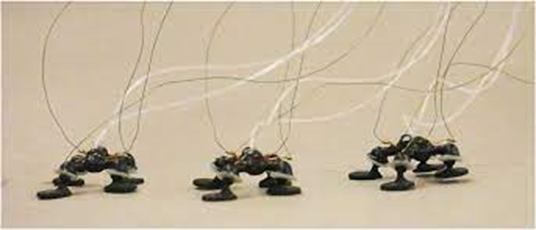Will engines take on Batteries?
WILL ENGINES TAKE ON BATTERIES?
A small portion of the world’s population is undertaking great endeavours to exceed the normal intelligence of the majority, in terms of ROBOTS. It could be threatening or might be flourishing nevertheless the game has been started remarkably.
Though at the beginning robots were large, like the long lives of people gradually decreased, the size of robots also diminished and nowadays tiny robots are made which are fistfuls. When the size decreased mainly they were powered by batteries. Now researchers have been developing conditions to replace combustion engines instead of batteries.
A research team consisting of mechanical engineers from Cornell University went through an experiment along with a colleague from Technion-Israel Institute of Technology and developed a tiny robot which can be handled using a combustion engine. The magazine Journal Science had reserved some pages to get written in this valuable regard on them.
You know how the car works. Same as that, the internal process is a known one, the only difference is, here this engine is tiny. A piston acts as a moving part which in turn gives birth to an explosion. This process leads to a series of explosions to create a continual force inside the combustion engine. In this new effort, the newly used gases are methane vapour and oxygen to run the engine. So no gasoline like in the car’s engine.
How did they kick off to build this engine? Excited to know? Well, they first came up with a combustion chamber as a testing station. Here, a sparking agent was there inside the chamber. An explosion was given out. With that amount of energy, the upper part of the chamber pushed upward itself up to a considerable height as a piston. If you can believe, this can exert a force of 9.5 newtons. How this process was continued to power the robot? To that, then an ignitor in conjunction with a pump, came and got a companion with this spark. However, within a second the piston pushed itself up and down 100 times giving you no chance to think about it for a second time.
What’s next? An identical second engine was built and connected the first and the second, together. Commands were given according to the pattern of switching them on. Indeed, the researchers made a tiny frog-shaped robot, so the robot could jump if both engines were fired. If not when the engines were fired in alternating styles the robot could walk.
This would be a new vision of 2024 which has the ability to draw a line under many ongoing projects. So, electrics or mechanics? We will have to ponder on who will take the dominance of the future robotic era.
Block diagram of the micro-actuator and
micro-robot testing apparatus. 2
Source – Tech Xplore
1 source - Tech Xplore
2 source - Tech Xplore


This is interesting ✨
ReplyDeleteMy pleasure to hear from you pavan ayya.
ReplyDelete